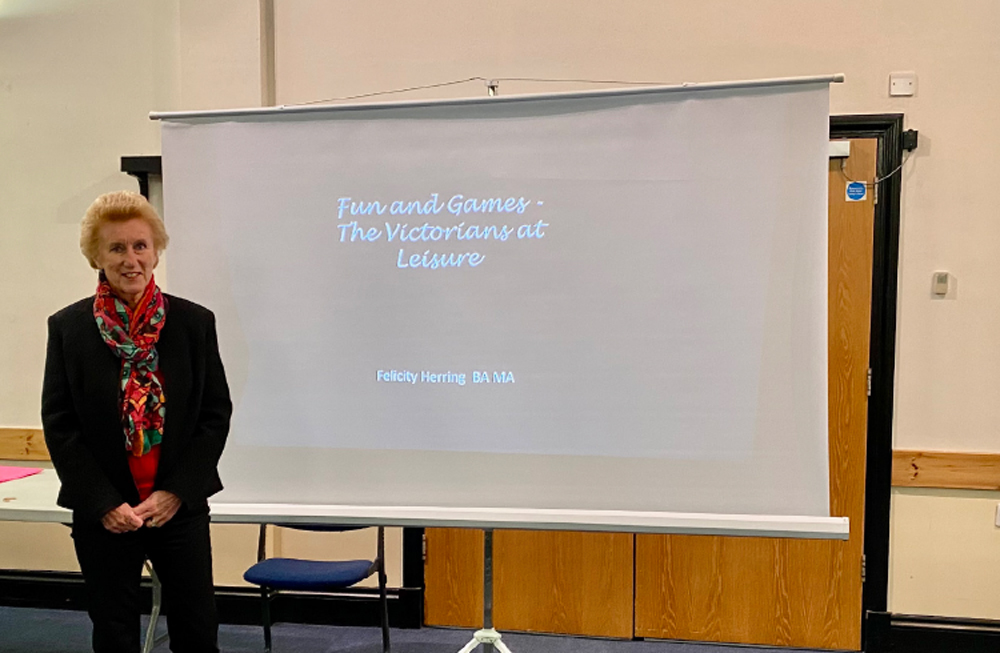by Laura Manning
The Blackmore Vale group of the Somerset and Dorset Family History Society opened its 2023 season of presentations by welcoming local art historian Felicity Herring to give a lecture on ‘Fun and Games – the Victorians at Leisure’.
This was an entertaining and thought provoking presentation, and brought into focus the fact that until the Factory Act of 1833, children under the age of nine were working 16 hours a day in distressingly awful conditions – not much time for fun and games for these children. Their only day off was Sunday – when they had to go to church.
Even after 1833, children over the age of nine were still employed as cheap labour, wherever possible, by factory bosses.
The upper classes, of course, needed to fill most of their time with leisure activities – and many of these activities were recorded by contemporary artists. It was wonderful to be able to zoom in on the detail in some of the paintings.
One painting featured was Going North, King’s Cross Station, painted by George Earl in 1893. The piles of luggage waiting to be loaded onto the train showed that the passengers would be enjoying their time in Scotland by playing tennis, golf, fishing, shooting and hunting – they even took their hunting dogs with them!

Tennis and croquet parties were very popular among the gentry – giving a legitimate reason for allowing males and females to mix. It is hard to imagine a female trying to play tennis in corsets and long skirts – but that is what happened. Serving was always underarm, of course, and the racquets were slightly different.
The Victorians were very keen to standardise the rules for games – Marylebone Cricket Club was responsible for formalising the rules of lawn tennis in 1875. These rules were adopted by the All England Lawn Tennis and Croquet Club for the first Lawn Tennis Championship in 1877.
Women were not allowed to compete in the championships at Wimbledon until 1884.
‘Folk Football’ had been played in local variants – often violent – since medieval times in England. In the 19th century, several public schools introduced their own, individual versions of the game – some, such as Rugby, allowed some handling of the ball, others did not.
The variance in rules made it difficult for public schoolboys entering university to continue playing except with former schoolmates – so, obviously, rules were needed! Cambridge University attempted to codify the rules in 1843 and these were refined in 1863. The game of rugby then became distinct from football.
The Factory Act of 1850 meant that many workers could stop work at 2pm on a Saturday. This led to the formation of many clubs – working-class men now played organised football and cricket matches.










Leave a Reply